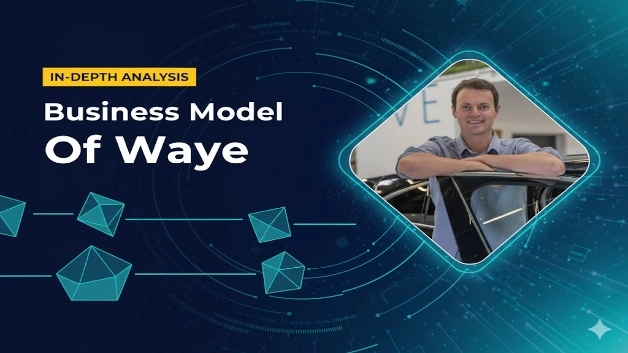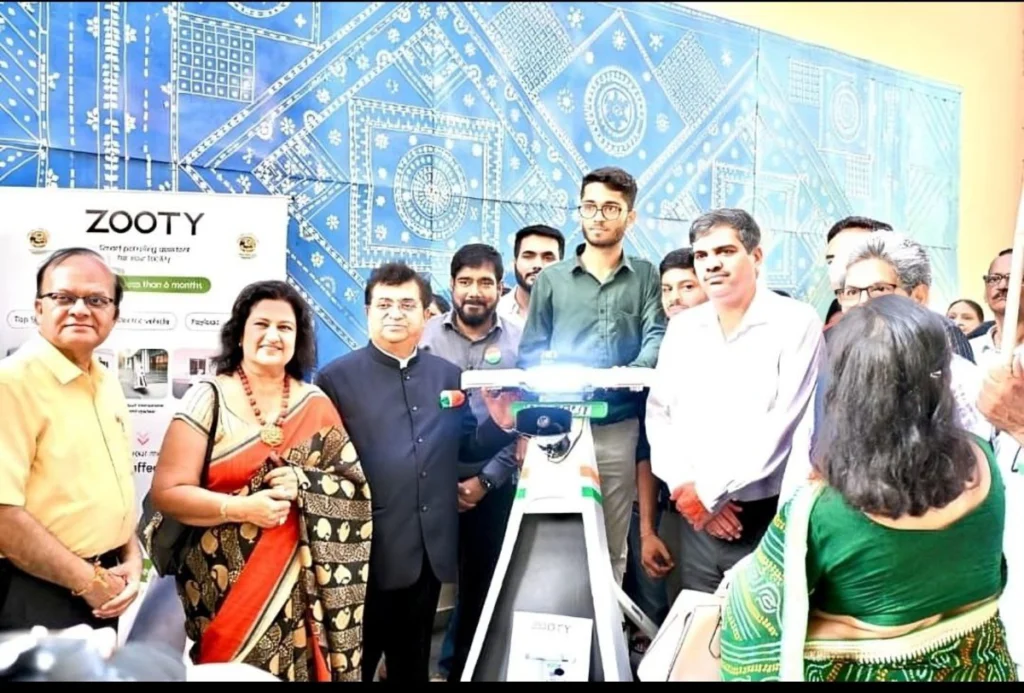| Category | Details |
|---|---|
| How Wayve Started | Business Model Of Wayve: Wayve was founded in 2017 by Alex Kendall, a computer vision expert, based in the United Kingdom. The company was created to address limitations in traditional autonomous vehicle systems that rely heavily on predetermined rules, expensive sensor arrays (LiDAR), and detailed pre-mapped environments. Kendall and his team developed groundbreaking “Embodied AI” technology that enables vehicles to learn and adapt dynamically, much like human drivers, rather than depending solely on fixed rules or extensive mapping infrastructure. The company emerged from the UK’s thriving computer vision and AI talent ecosystem. |
| Present Condition | Wayve is currently in advanced discussions to secure a landmark $2 billion funding round co-led by Microsoft and SoftBank, with strategic participation from Nvidia and Uber. The company has previously raised over $1 billion in earlier funding rounds, establishing itself as a leading autonomous vehicle technology company. Wayve has active operations and testing programs in the UK and US, with established partnerships with major automotive manufacturers like Nissan and ride-hailing platform Uber. The company is actively transitioning from pure research and development to real-world commercialization of autonomous vehicle technology. |
| Future of Wayve | Wayve is poised for aggressive global expansion across multiple geographic markets and vehicle segments. The company plans to expand testing and deployment in Germany and Japan alongside existing UK and US operations. The $2 billion funding will accelerate development of increasingly sophisticated self-driving mechanisms and enable scaled commercial deployment. Wayve aims to transition from passenger vehicle applications into freight, logistics, and commercial fleet services—substantially expanding its addressable market. The company expects to embed its AI technology into commercial driver assistance systems, autonomous ride-hailing solutions, and eventually fully autonomous fleet operations. Long-term vision includes becoming the foundational autonomous vehicle technology platform for global automotive manufacturers. |
| Future of Industry | The autonomous vehicle industry is at an inflection point where embodied AI and machine learning approaches are replacing traditional rule-based systems. Governments across North America, Europe, and Asia are recognizing the societal value of safer autonomous transportation while establishing clear regulatory frameworks. The industry is transitioning from isolated, geography-specific implementations to unified, globally-deployable AI platforms. Investment is shifting from traditional automotive companies to technology-first AI organizations. The market is consolidating around AI-first approaches that prioritize adaptability and real-world learning over costly sensor arrays and pre-mapping. Autonomous mobility is expected to extend beyond passenger vehicles into commercial trucking, logistics, ride-hailing, and delivery services. Multi-billion-dollar commercial opportunities are emerging in freight automation and last-mile delivery. |
| Opportunities for Young Entrepreneurs | Entrepreneurs can identify opportunities in: (1) specialized autonomous vehicle components and sensors optimized for embodied AI systems, (2) autonomous fleet management software and logistics optimization platforms, (3) regulatory compliance and safety verification technology for autonomous vehicles, (4) data collection and simulation platforms for training autonomous AI models, (5) autonomous vehicle insurance and risk assessment solutions, (6) charging and maintenance infrastructure for autonomous electric vehicles, (7) safety testing and validation services for autonomous systems, (8) mapping and navigation software for autonomous vehicles, (9) cybersecurity solutions protecting autonomous vehicle networks, and (10) AI training data marketplace services. The multi-billion-dollar autonomous vehicle ecosystem extends far beyond vehicle manufacturers, with substantial opportunities in supporting infrastructure, software, and services. |
| Market Share | Specific market share percentages are not disclosed in available information. However, Wayve operates in a highly competitive autonomous vehicle market alongside established players like Waymo (Google), Cruise (GM), and Tesla. The company’s defensible market position stems from technological leadership in embodied AI rather than market dominance by volume. Wayve has particular strength in the UK and North American markets with expanding presence in Europe and Asia. The broader autonomous vehicle market is still in early commercialization stages, making current market share metrics less relevant than technological capability and strategic partnerships. The company’s partnerships with Nissan, Uber, Microsoft, and other major firms suggest significant influence within the autonomous vehicle ecosystem despite not yet having dominant market share by traditional metrics. |
| MOAT (Competitive Advantage) | Embodied AI Technology: Wayve’s proprietary embodied AI approach enables vehicles to learn and adapt from real-world driving experiences like human drivers, providing superior flexibility compared to LiDAR-dependent competitors relying on pre-mapping and rule-based systems. Reduced Dependency on Expensive Infrastructure: Unlike competitors requiring extensive LiDAR sensors and detailed pre-mapped environments, Wayve’s technology reduces hardware costs and geographic limitations, enabling faster deployment and scalability. Computer Vision Expertise: Founded by computer vision pioneer Alex Kendall, the company possesses deep technical expertise in visual understanding and contextual interpretation that competitors struggle to replicate. Data Network Effects: As the platform accumulates driving data across diverse global markets, vehicle types, and environmental conditions, machine learning models improve continuously, creating compounding competitive advantages over time. Strategic Technology Partnerships: Collaboration with Microsoft Azure provides advanced cloud computing, training resources, and global infrastructure unavailable to most competitors. Access to Nvidia’s specialized AI computing ensures technical superiority in model training and deployment. Manufacturing Partnerships: Relationships with Nissan, Uber, and other automotive/mobility leaders provide commercial deployment pathways and real-world testing advantages. Global Regulatory Navigation: Operational excellence in navigating complex multi-country regulatory frameworks across UK, US, Europe, and Asia provides competitive advantages in international expansion. |
| How Wayve Makes Money | Wayve generates revenue through multiple streams: (1) Technology Licensing: Licensing embodied AI technology to automotive manufacturers for integration into commercial vehicle platforms and driver assistance systems. (2) Commercial Driver Assistance Systems (ADAS): Embedding AI capabilities in vehicles sold by manufacturing partners, generating revenue per vehicle or through licensing fees. (3) Autonomous Ride-Hailing Services: Partnering with platforms like Uber to deploy autonomous ride-hailing capabilities, potentially generating revenue through revenue-sharing arrangements or per-ride fees. (4) Fleet Services: Providing autonomous fleet management and optimization services for freight, logistics, and commercial transportation customers. (5) Software-as-a-Service (SaaS): Offering subscription-based access to autonomous vehicle software and management platforms for fleet operators. (6) Data and Analytics: Monetizing aggregated, anonymized driving data and insights derived from billions of miles of autonomous vehicle operation. Specific pricing models, commission structures, and revenue splits with partners are not publicly disclosed but are likely negotiated individually with each manufacturing and deployment partner based on deployment scale and market opportunity. |
I’m Araib Khan, an author at Startups Union, where I share insights on entrepreneurship, innovation, and business growth. This role helps me enhance my credibility, connect with professionals, and contribute to impactful ideas within the global startup ecosystem.




